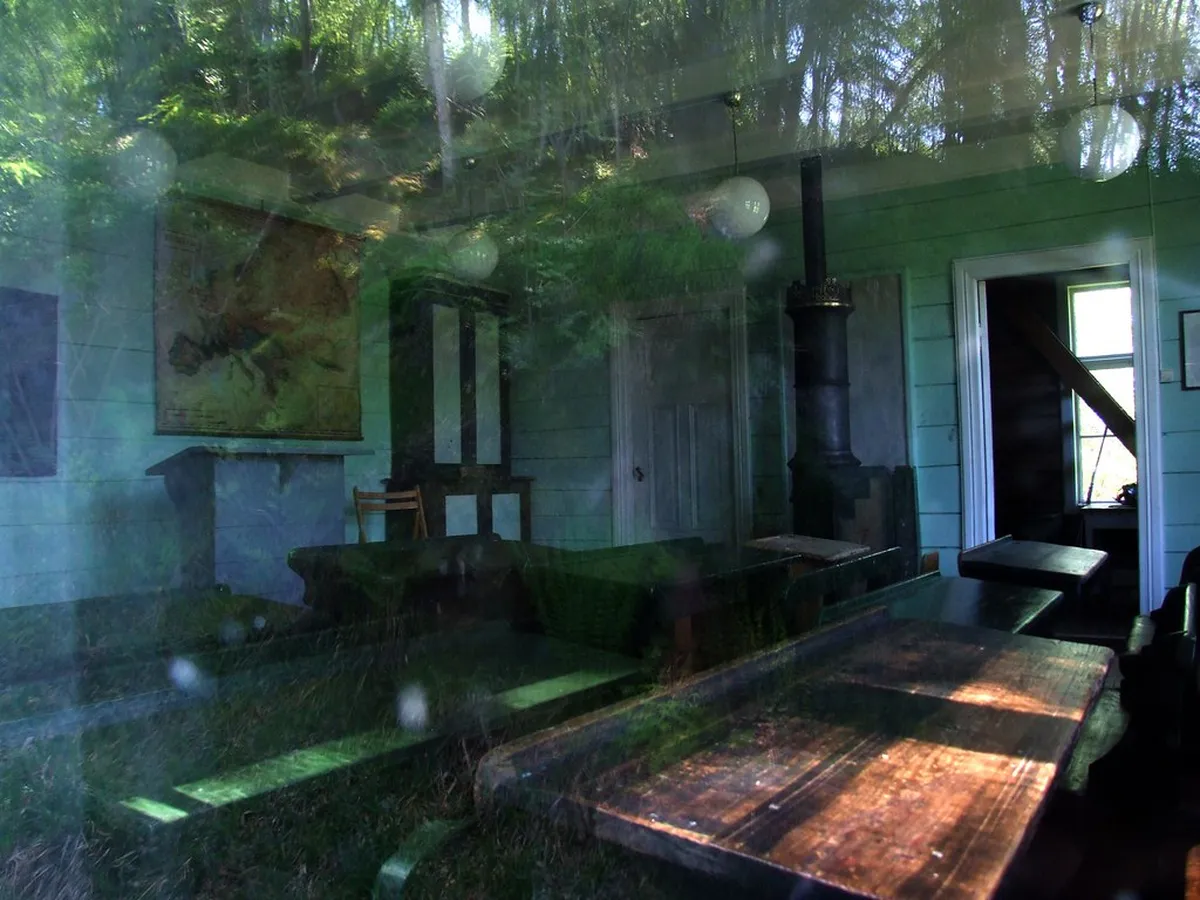Chen Clan Ancestral Hall: A Complete Guide to Guangzhou's Cultural Gem
The Chen Clan Ancestral Hall stands as one of Guangzhou's most significant historical landmarks and a masterpiece of traditional Cantonese architecture. Built in the late 19th century, this magnificent complex now houses the Guangdong Folk Art Museum, offering visitors a deep dive into the region's rich cultural heritage. This comprehensive guide covers everything you need to know for your visit in 2025, from historical context and architectural highlights to practical visiting information. Enhance your Guangzhou experience with our Guangzhou itinerary.

History and Significance of Chen Clan Ancestral Hall
Plan this trip faster with our free online itinerary maker. Get a personalized day-by-day plan in minutes.
Understanding the historical context enhances your appreciation of this cultural treasure: Discover the best local cuisine with our Guangzhou food guide. Explore on foot with our Guangzhou walking tour.
Origins and Construction
The Chen Clan Ancestral Hall (陈家祠, Chén Jiā Cí) was built between 1890 and 1894 during the Qing Dynasty. It was jointly funded by the Chen families from 72 counties in Guangdong Province, highlighting its importance as a clan organization center. The primary purpose was to provide a place for Chen family members to study for the imperial examinations and to honor their ancestors. Navigate the city efficiently with our Guangzhou transport guide.
Architectural Significance
The complex represents the pinnacle of traditional Lingnan (southern Chinese) architecture and craftsmanship. It features 19 buildings with nine halls and six courtyards arranged symmetrically along a north-south axis, covering an area of 13,200 square meters. The hall showcases exquisite craftsmanship in wood carving, stone carving, brick carving, pottery, and iron casting—making it an encyclopedia of traditional Chinese decorative arts. Explore on foot with our Guangzhou walking tour.
Modern Role
Since 1959, the ancestral hall has housed the Guangdong Folk Art Museum, preserving and displaying traditional Cantonese art forms. It was designated as a National Key Cultural Relic Protection Unit in 1988, highlighting its cultural significance to China's heritage. Enhance your Guangzhou experience with our Guangzhou itinerary. Schedule your trip with our Guangzhou itinerary.
Pro Tip: The Chen Clan Ancestral Hall is not just a tourist attraction but a living museum of Cantonese culture. Many of the craft techniques displayed here are still practiced in Guangzhou today. Schedule your trip with our Guangzhou itinerary. Explore on foot with our Guangzhou walking tour.
Architectural Highlights and Must-See Features
When visiting the Chen Clan Ancestral Hall, these are the artistic and architectural elements you shouldn't miss:
Entrance Gate and Stone Carvings
The main entrance features impressive stone carvings depicting traditional Chinese motifs. Look for the intricate stone lions guarding the entrance and the decorative columns featuring auspicious symbols like dragons and phoenixes.
Roof Ridge Decorations
The hall's roof ridges feature some of China's finest ceramic sculpture work. The colorful figurines portray scenes from Chinese folk tales, historical events, and mythological stories. These sculptures not only served as decoration but also as protection against fire due to their fire-resistant porcelain material.
Wood Carvings
Perhaps the most celebrated feature of the Chen Clan Academy (another name for the hall), the wood carvings are breathtaking in their detail and variety. Throughout the complex, you'll find:
- Intricate scenes depicting the "24 Stories of Filial Piety"
- Elaborate window frames featuring birds, flowers, and mythical creatures
- Beams and pillars adorned with dragons, phoenixes, and scenes from classic literature
The Nine Halls
The complex includes nine halls, with the Juxian Hall (Assembly Hall) being the most spectacular. This central hall served as the main ancestral worship space and features some of the most elaborate decorations in the entire complex.
| Area | Key Features | Art Form |
|---|---|---|
| Main Entrance | Stone lions, decorative columns | Stone carving |
| Roof Ridges | Figures from mythology and folklore | Ceramic sculpture |
| Windows and Doors | Birds, flowers, auspicious symbols | Wood carving |
| Juxian Hall | Ancestral tablets, ceremonial items | Mixed media |
| Courtyards | Ornamental gardens, potted landscapes | Traditional gardening |
Guangdong Folk Art Museum Exhibitions
As the home of the Guangdong Folk Art Museum, the Chen Clan Ancestral Hall houses remarkable collections of traditional arts:
Permanent Collections
The museum showcases various traditional Cantonese arts across different halls:
- Cantonese Embroidery: Known for its vibrant colors and intricate designs
- Ivory Carving: Historic pieces displaying incredible detail (note: these are antiques; modern ivory trade is prohibited)
- Pottery and Porcelain: Including the famous Shiwan pottery figures and Guangcai porcelain
- Traditional Furniture: Examples of Ming and Qing dynasty furniture crafted in the Lingnan style
- Paper Cutting and Kites: Delicate works showing scenes from daily life and mythology
Special Exhibitions
Throughout the year, the museum hosts special exhibitions on various aspects of Cantonese culture. In 2025, scheduled exhibitions include contemporary folk art interpretations, cultural exchanges with other regions of China, and thematic displays connected to local festivals.
Pro Tip: Photography is permitted in most areas, but flash photography is prohibited to protect the ancient artifacts and artwork. Check with staff about specific areas where photos might be restricted.
Practical Visitor Information for 2025
🎯 Insider Tip: Discover the best Cultural Heritage experiences with Viator Tours!
Plan your visit to the Chen Clan Ancestral Hall with this essential information:
Opening Hours and Best Time to Visit
The hall is open daily from 8:30 AM to 5:30 PM, with last entry at 5:00 PM. To avoid crowds, consider visiting on weekdays or early in the morning. The lighting for photography is often best between 10:00 AM and 2:00 PM when sunlight illuminates the courtyards.
Admission Fees
As of 2025, the standard admission fee is ¥10 (~$1.50) per person. Additional charges may apply for special exhibitions. Students, seniors, and children under 1.2 meters tall qualify for discounted rates of ¥5 (~$0.75).
Location and How to Get There
The Chen Clan Ancestral Hall is located at 34 Enlong Lane, Zhongshan 7th Road, Liwan District, Guangzhou. There are several convenient ways to reach it:
- By Metro: Take Line 1 to Chen Clan Academy Station (Exit D), then walk about 5 minutes
- By Bus: Routes 85, 127, 182, and 270 all stop near the hall
- By Taxi: Show the driver "陈家祠" (Chen Jia Ci) or have your hotel write it down for you
Guided Tours and Audio Guides
English-speaking guides are available for hire at the entrance for approximately ¥100 (~$15) for a one-hour tour. Audio guides in multiple languages including English, Japanese, Korean, and French can be rented for ¥25 (~$3.50) with a refundable deposit. In 2025, a new smartphone app also provides self-guided tour options with augmented reality features highlighting key architectural elements.
Accessibility
While efforts have been made to improve accessibility, some areas of this historical building remain challenging for visitors with mobility limitations. The main halls have ramp access, but some courtyards and exhibition areas require navigating steps. Wheelchairs are available for borrowing at the entrance on a first-come, first-served basis.
Cultural Etiquette and Visitor Tips
💡 Pro Tip: Book your Cultural Heritage adventures in advance through Viator for the best deals!
Enhance your experience at the Chen Clan Ancestral Hall with these helpful insights:
Respectful Behavior
Though primarily a museum now, the hall remains culturally significant. Observe these etiquette guidelines:
- Speak quietly, especially in the main ancestral halls
- Don't touch carvings, artwork, or artifacts
- Follow any instructions from staff regarding restricted areas
- Dress appropriately (casual is fine, but overly revealing clothing may be frowned upon)
Time Needed for Your Visit
Allow 1.5-2.5 hours to fully appreciate the complex. Art enthusiasts and photographers may want to allocate 3+ hours to examine the details and capture the intricate craftsmanship.
Best Seasons to Visit
The hall can be enjoyed year-round as it offers both indoor and outdoor spaces. Spring (March-May) and autumn (October-November) provide the most comfortable temperatures. During Chinese New Year, the hall features special decorations and sometimes hosts cultural performances.
Pro Tip: Visit on a clear, sunny day to fully appreciate the play of light and shadow on the intricate carvings, especially in the courtyards.
Nearby Attractions and Dining Options
Extend your cultural exploration with these suggestions near the Chen Clan Ancestral Hall:
Attractions Within Walking Distance
- Attractions Within Walking Distance
- Liwan Museum: 15-minute walk, showcasing local history
- Litchi Bay: 20-minute walk, a scenic area with traditional architecture
- Xiguan Houses: Various historic residences in the surrounding neighborhood
Local Dining Recommendations
The area around the hall offers excellent opportunities to sample authentic Cantonese cuisine:
- Panxi Restaurant: Famous for traditional dim sum in a garden setting
- Liwan Lake Restaurant: Specializing in Cantonese seafood dishes
- Taohuayuan Dessert Shop: Traditional sweet soups and desserts
For a deeper exploration of Guangzhou's famous culinary scene, don't miss our comprehensive guide to dim sum in Guangzhou, which outlines the best restaurants and must-try dishes in the city.
Shopping for Traditional Crafts
If the museum's artifacts inspire you, several shops near the hall sell contemporary versions of traditional crafts:
- Chen Clan Gift Shop: Located at the exit, offering reproductions of items in the museum
- Yide Lu Market: Various stalls selling traditional crafts and souvenirs
For more shopping opportunities, consider visiting Beijing Road Shopping Street, one of Guangzhou's premier retail districts where you can find everything from traditional crafts to modern fashion.
Chen Clan Ancestral Hall in Your Guangzhou Itinerary
The Chen Clan Ancestral Hall fits perfectly into a broader exploration of Guangzhou. Consider these itinerary suggestions:
Half-Day Cultural Tour
Combine your visit with nearby Liwan District highlights:
- Morning: Chen Clan Ancestral Hall (2 hours)
- Lunch: Traditional dim sum at a local restaurant
- Afternoon: Explore Litchi Bay and the historic Xiguan Houses
Full Guangzhou Experience
For a comprehensive exploration of Guangzhou, explore our detailed itineraries incorporating the Chen Clan Ancestral Hall along with other must-see attractions:
Perfect Pairing: Culture and Scenery
For a perfect balance of cultural exploration and natural beauty, pair your morning visit to the Chen Clan Ancestral Hall with:
- Afternoon: Take a relaxing Pearl River Night Cruise to see Guangzhou from the water
- Evening: Enjoy the spectacular Huacheng Square Light Show for a dazzling display of modern Chinese technology and artistry
Frequently Asked Questions
What is the significance of the Chen Clan Ancestral Hall?
How much time should I allocate for visiting the hall?
Is photography allowed inside the Chen Clan Ancestral Hall?
What's the best time of year to visit?
Are there English translations available at the exhibits?
The Chen Clan Ancestral Hall represents the pinnacle of Cantonese architectural and artistic achievement, offering visitors a window into southern China's rich cultural heritage. As you wander through its magnificent halls and courtyards, you'll gain insight into the values, aesthetics, and craftsmanship that have shaped Guangzhou's identity through the centuries. Whether you're a history enthusiast, architecture lover, or cultural explorer, this extraordinary landmark promises a memorable and enriching experience at the heart of one of China's most vibrant cities.
Keep exploring Guangzhou: Guangzhou experiences. Explore related insights at Guangzhou attractions.


